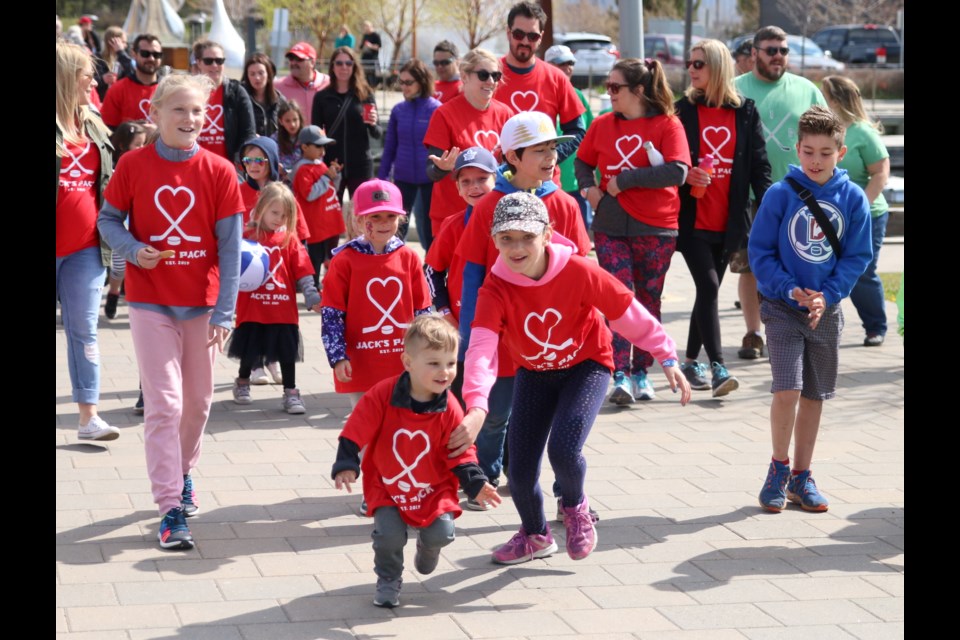THUNDER BAY - Andrea Cowie’s six-year-old daughter, Sawyer, was diagnosed with type 1 diabetes at the age of two and with all the needles and the pokes she has to go through on a daily basis, there are good days and bad.
“Some days the numbers make sense and everything balances out and some days they just don’t,” Cowie said. “They don’t get to live like a normal child. It’s hard some days.”
Cowie is hopeful that with the support of so many people across Canada, no child or adult will have to endure those low days for much longer.
On Sunday, more than 200 people joined thousands across Canada for the 26thAnnual Walk to Cure Diabetes for Juvenile Diabetes Research Foundation.
Nationally the walk expects to bring in more than $1.8 million for diabetes research and the total raised locally was more than double the original goal.
“We are on track to raise $30,000,” said Kim Leroy, logistics coordinator for JDRF.
“Our goal was $15,000 and we are heading toward $30,000 for Thunder Bay. It is amazing. I was hoping for $20,000 but we hit our goal of $15,000 on Monday and we hit $20,000 last night and its just coming in.”
In addition to raising money for type 1 diabetes research, the walk this year is also focusing on advocacy to ensure everyone has access to technology available for monitoring his or her blood.
“It’s to try to make sure we have access for technology for all type 1’s regardless of age,” Leroy said. “It’s not even across the country and every province is different. In many cases, when you turn 18 you do not qualify anymore.”
Type 1 diabetes is an autoimmune disease that causes the body to attack insulin-producing cells. As a result, people must monitor their blood every day.
In the last 26 years, the monitoring technology has advanced by leaps and bounds thanks to research being conducted here in Canada and around the world.
“If you ask any type 1 who had it 20 years ago, they were peeing into a cup to monitor,” Leroy said. “Now they can scan their phone over their arm. The technology for maintaining everyday life has dramatically improved. What was science fiction research we were doing 20 years ago we are actually doing it now.”
But advancements in technology do not eliminate the difficulties that come with living with type 1 diabetes. Sawyer’s treatment remains much the same, Cowie said, because for a six-year-old, it can be difficult to change what has been a longstanding routine.
“They have come out with new things,” she said. “Unfortunately, she is six and she doesn’t want to try new things. But there has been advancements, just not in our household.”
Cowie and Team Sawyer raised more than $5,500 this year and seeing so many people supporting the fight to cure diabetes is encouraging, she said, but it can also be disappointing to see new faces.
“It’s good and it’s bad,” she said. “You see the new groups that come out every year and that means a new child has been diagnosed. But to see everybody come out and support it, their family, their friends, it’s nice.”
“We are trying to raise as much money as possible to get that cure so the kids don’t have to do this.”
